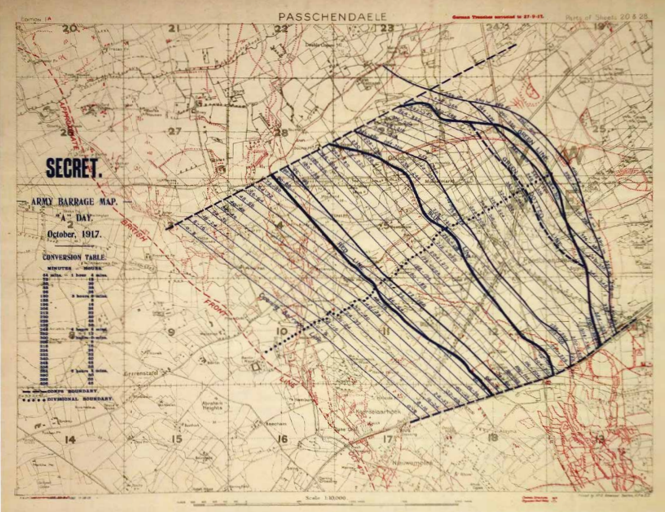Map of Hell at Passchendaele
In October 1917, new attacks in the direction of Passchendaele are prepared as Canadian, Australian and New Zealand troops reinforce the British army. The artillery is tasked with to eliminating obstacles and enemy soldiers, while firing over the heads of its own side’s infantry. All the infantry subsequently needs to do is occupy ravaged territory. Starting and stopping these attacks needs to be synchronised all along the lines, otherwise the artillery will mainly eliminate its own troops. The map (1:10,000) shows that this process needs to be repeated every 70 metres. On 12 and 22 October, such an attack was launched. When downpours erupt, cannons, soldiers and supplies are moved forward over boards. Criticism to the effect that this tactic means thousands of casualties without any real territorial gain is parried by General Haig who (incorrectly!) claims that German losses exceed British losses by 100%. What was once Passchendaele is taken on November 6; taking eighty square kilometres of hardfought mud has demanded more than half a million dead, missing, and seriously injured.

General Staff, Geographical Section, Passchendaele. Secret. Army Barrage Map, ‘A’ Day, October 1917, London 2022 (facsimile). Coll. S/T Y.1a.23, 41 x 61,5 cm.
